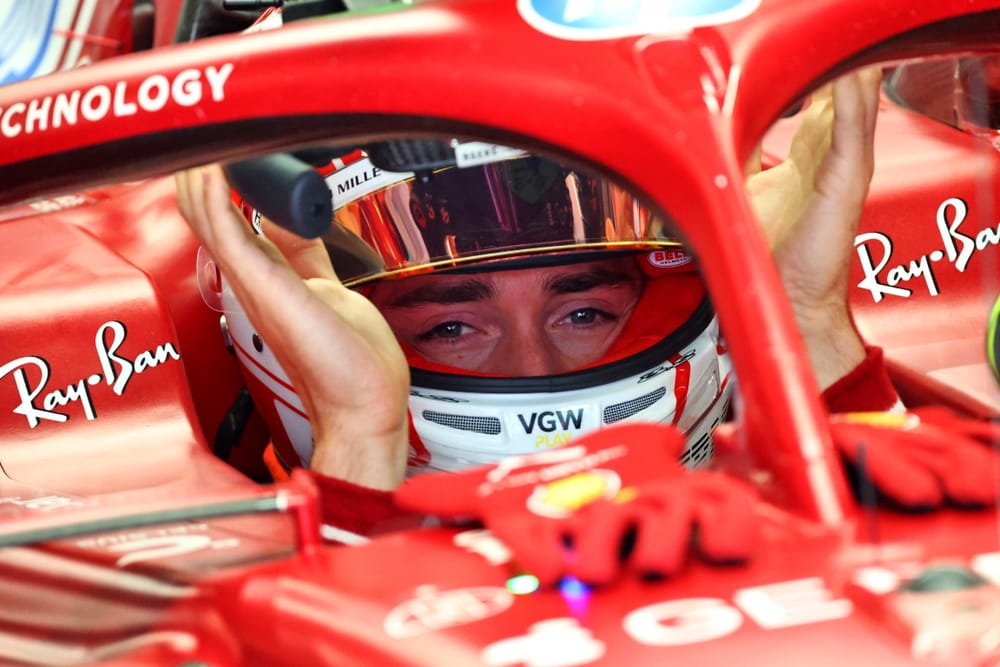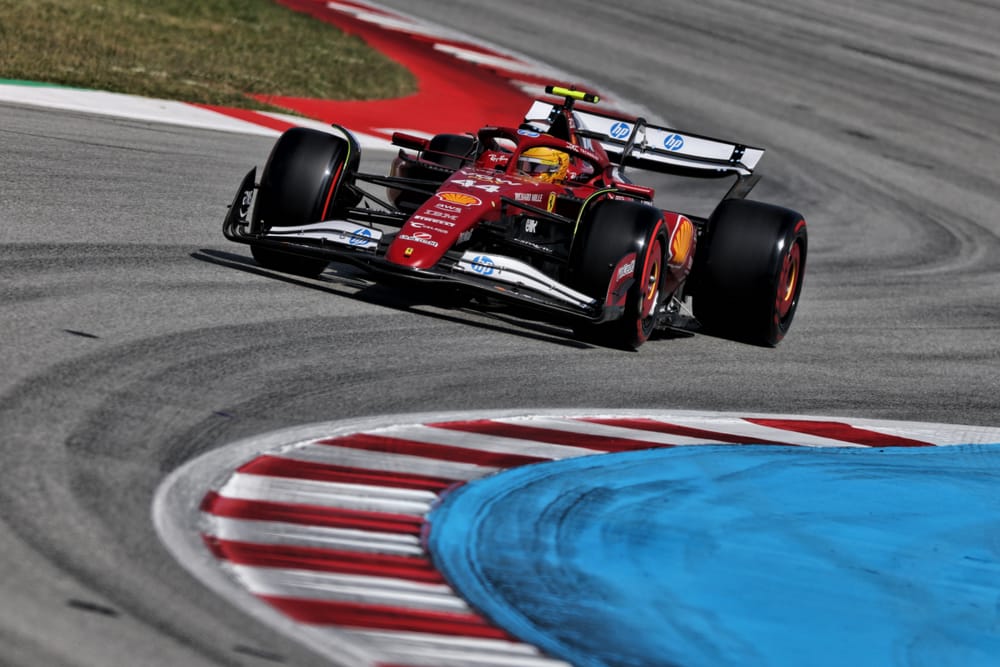Charles Leclerc says he will take personal responsibility if Formula 1's Spanish Grand Prix weekend ends in disappointment, after he pushed for the tyre calls that hurt his chances in qualifying.
The Ferrari driver ended up seventh on the grid, two places behind team-mate Lewis Hamilton, after having just one set of fresh soft tyres for Q3 and electing to run early on.
But he says that the calls that put him in that situation were entirely his making, as he said he went against team advice about both tyre strategy and when to run.
“I take responsibility for it because the team had pushed for a different choice,” he admitted to Sky Sports.
“I did all these choices in order to have better tyres for tomorrow’s race,” he then elaborated to the written press. “If tomorrow we have a very bad race, then I’ll have to take the responsibility for a bad weekend.
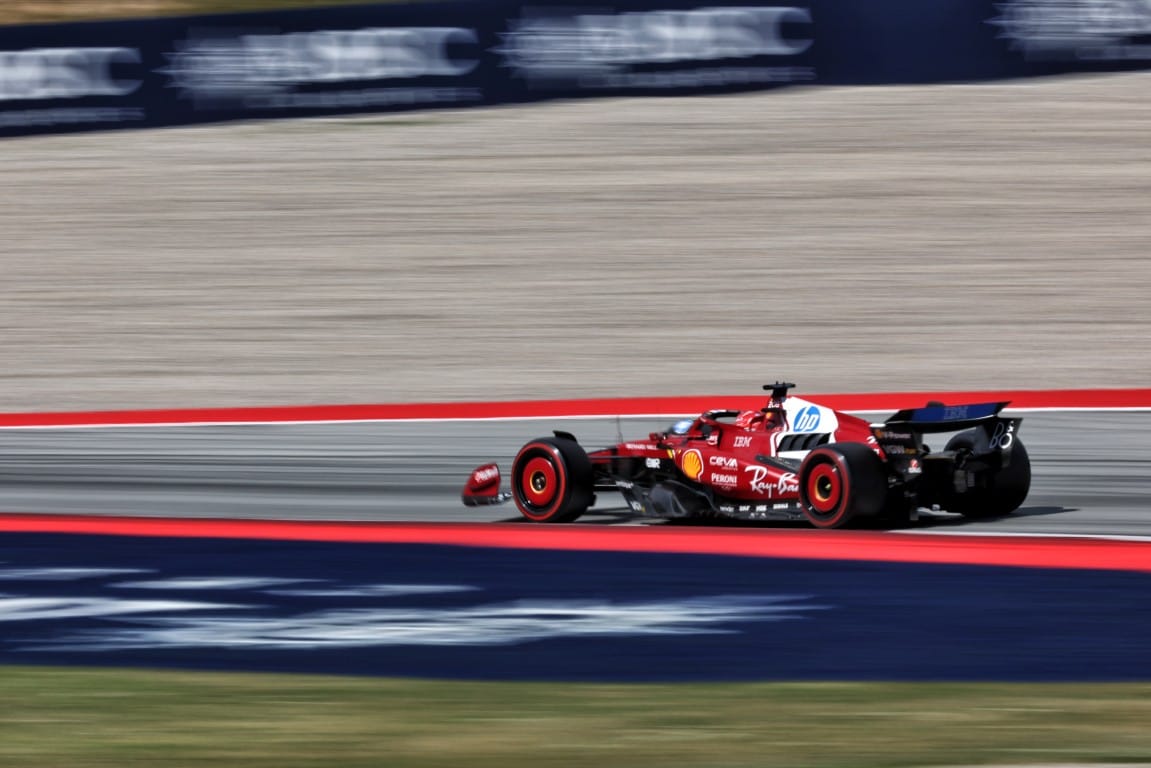
“If it goes well then I’m happy and I will take the credit for pushing the team one way! Only time will tell.
“Obviously P7 is a little bit below our expectations. Even with the choices we’ve made for qualifying, I expected to be a bit further up. But it is the way it is. Now the choices are made, and I hope that tomorrow it will pay off.”
Leclerc elected to put himself on a tyre offset compared to many other drivers in keeping two sets of fresh mediums for the race – whereas most of his rivals have been left with just one, with only the Haas drivers in the same boat as Leclerc.
Leclerc put himself in that position by running an extra soft rather than a medium in final practice.
Then he did not help matters by going for a late run at the end of Q2 with a new soft. This lap, part of an insurance run, was aborted early on – but will have taken the best off the tyres for Q3.
Team-mate Hamilton was marginally ahead in the Q2 pecking order at that point and was left in the pits by Ferrari. He admitted it had been a nervy few minutes given how close Q1 had been, but enthusiastically described it as "a good call by the team".
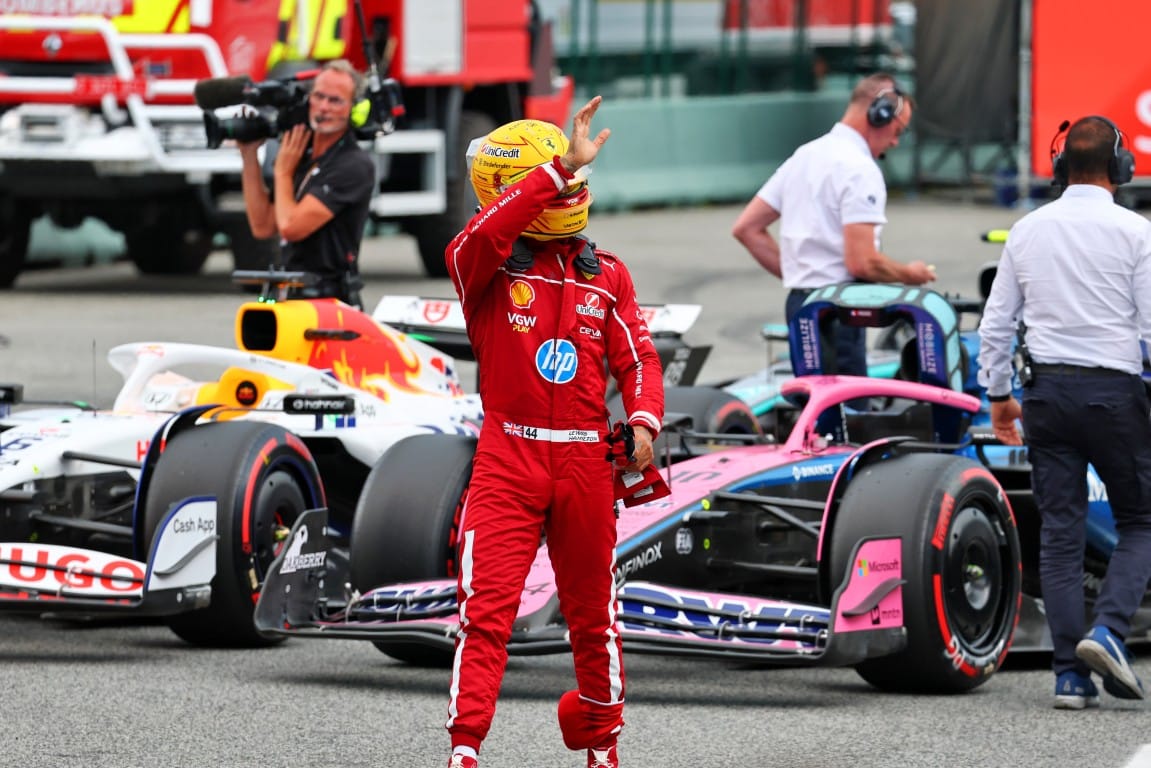
While Leclerc would still have had the option to get a banker on that old set at the start of Q3 before using a fresh tyre later, he said that he actually preferred to go early with his new set because he felt track conditions would be at their best and he also wanted the opportunity of another attempt if things had not worked out.
He also presumably didn't feel like it would be worth taking anything more out of that used soft set given he still needs it for the start of the race.
“I take full responsibility for the way that qualifying has gone,” explained Leclerc. “It was my choice. And in Q3 it was my choice to go in the middle when the team was pushing me to go to the end.
“I still wanted to have a plan B in case that one lap wasn’t going to plan, a mistake or whatever, I wanted the chance to have a second lap. So that’s on me.”
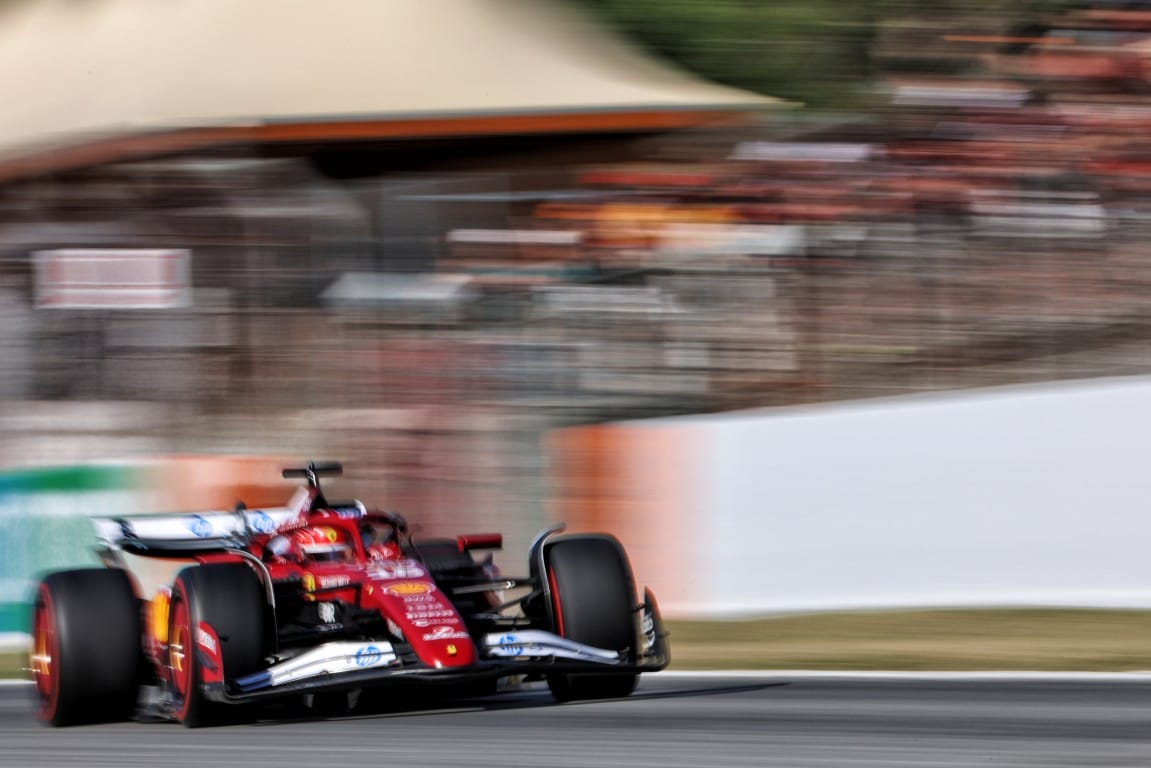
Ferrari had come into the Spanish GP weekend hoping that the new front wing technical directive could help its form compared to rivals.
But with little appearing to have changed because of it, Leclerc admits that it has been yet another reality check about where Ferrari stacks up against McLaren.
“I was a bit more optimistic after FP1 and FP2,” he said. “I thought that the car was behaving pretty well.
"Unfortunately in qualifying it went back to normal and that’s a little bit what I was thinking of last night: that we’ll only see when everybody goes flat-out in qualifying and McLaren is still a step ahead.”
How Leclerc’s strategy could pay off
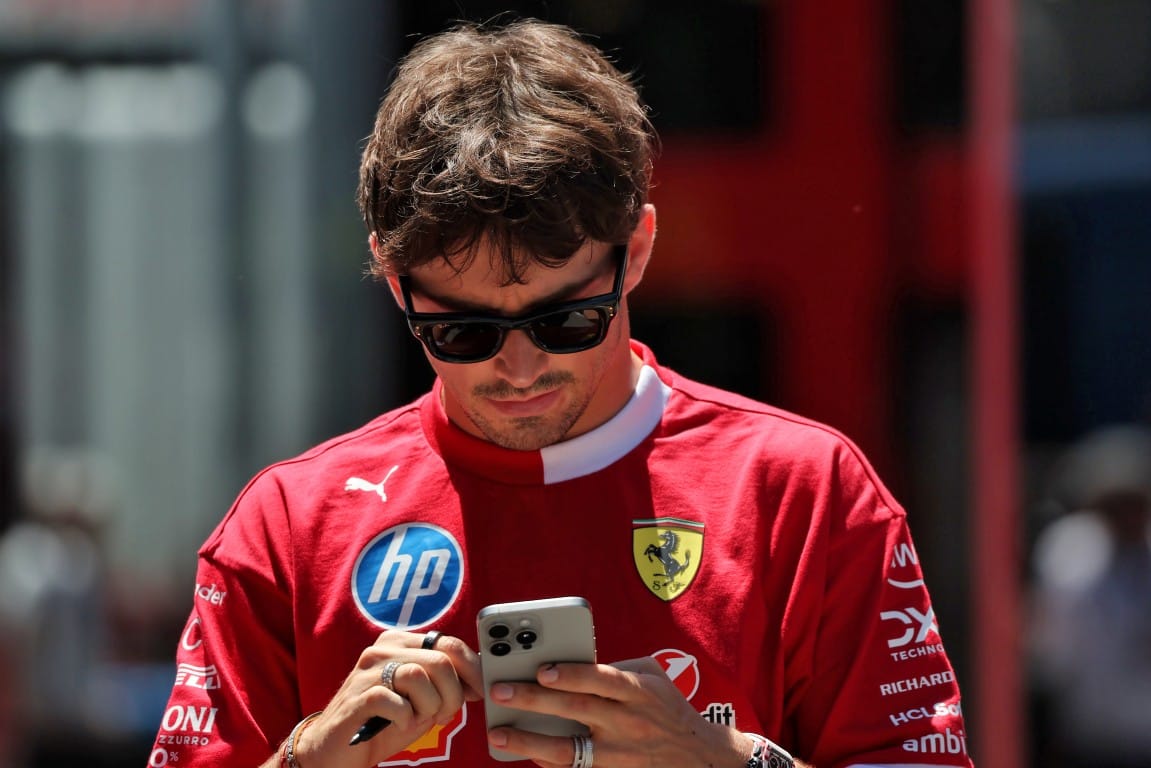
As the only frontrunner with an extra set of mediums, Leclerc’s hopes of his strategy paying off lie with the soft compound not performing as the drivers around him expect it to.
The quickest strategy on paper is a soft/medium/soft two-stopper, but that relies on there not being an excessive drop in performance from the softest C3.
Pirelli motorsport director Mario Isola said that the situation was definitely uncertain.
“There is obviously a question mark on the soft in terms of degradation and wear, because in any case the wear of the front left is quite high and the mileage is limited,” he said.
“How limited is difficult to predict, because it depends on the set-up of the car, the level of management and also the track evolution.”
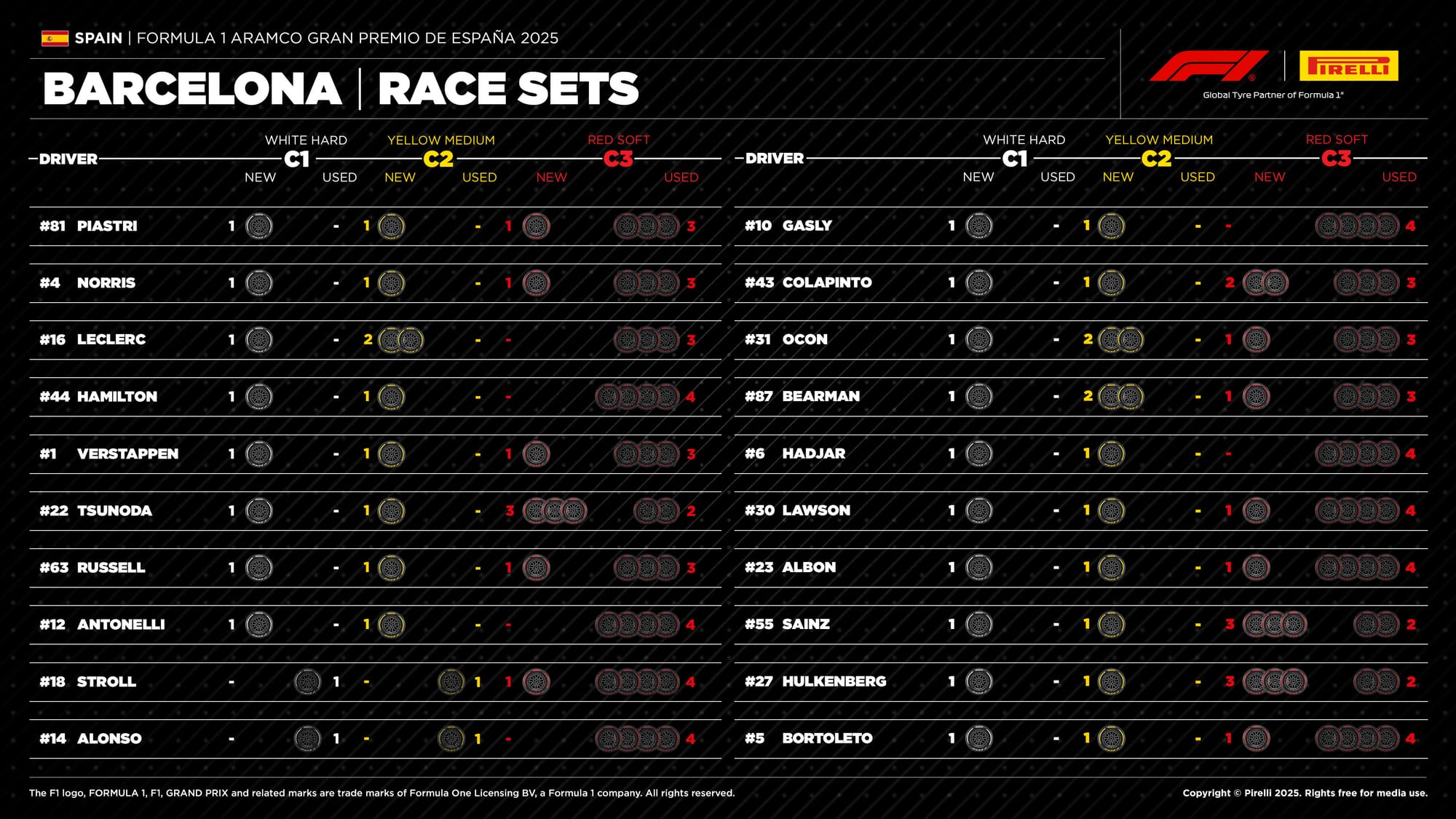
If the soft does not perform as hoped, then that will force Leclerc’s rivals on to the hard tyre for the final stint – which is slower and has not performed well so far this weekend because it is sliding too much.
Isola added: “Clearly, if the plan is a soft/medium/soft, you don't have a lot of flexibility, because the race is 66 laps.
“With a soft compound, you can run for around 20 laps. And that means that with two softs you have to use the medium for 26 laps or more. So you don't have a lot of flexibility.
“While with the strategy soft/medium/medium, the flexibility is higher. So on paper, it should be an advantage in terms of race strategy if you have soft, medium, medium.”


